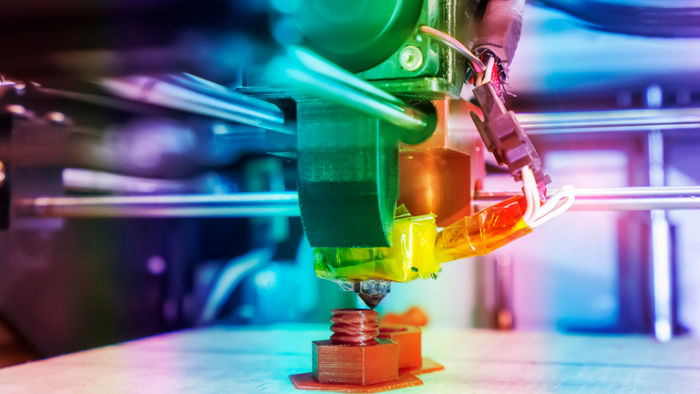Bold manufacturers are thinking in 3D from the outset.
Prediction of worldwide spending for all 3D printing products and services will hit $15.8 billion in 2020
by Philipp Jung is SVP and global head of Vertical Industries & End-to-End Applications for HP’s 3D Printing and Digital Manufacturing business.
For Industry Week
photo: Thinkstock/Getty Images
As we close another year of progress in 3D printing, it’s an ideal time to take a moment to predict what innovations will unfold in the year ahead.
The widely followed 2019 Wohlers Report predicts worldwide spending for all 3D printing products and services will hit $15.8 billion in 2020 and continue to accelerate, reaching $23.9 billion in 2022 and $35.6 billion by 2024.
This market expansion is largely the result of improvements in 3D printer technology, including higher parts quality, manufacturing-grade accuracy and repeatability, as well as an expansion of available materials. In addition, 3D printing solution providers are using machine learning (ML) for heightened process control. All of this has resulted in significantly better Overall Equipment Effectiveness (OEE) and larger addressable markets
Manufacturers across industries are now imagining new ways to apply this technology, first and foremost with an eye toward personalization. Think, electric cars and buses in automotive; prosthetics, orthotics, dental care and organ modeling in life sciences; custom shoes, belts, jewelry and eyewear — you name it — in consumer goods, all personalized and all improved by the lightweight durability of 3D printed parts. Beyond lightweighting, 3D printing can also improve parts and product performance through better fluid management and energy absorption.
Bold manufacturers are beginning to “think in 3D” from the outset. Consider these recent examples of major industries using the technology in real ways.
Automotive
One of the most urgent transportation demands is the need for more electric vehicles to lower emissions and move people quickly and efficiently. Volkswagen who is among the leaders with the ID.3 — the automaker’s first mass-market electric vehicle—will eventually utilize 3D printed components. More broadly, many major automakers, including BMW, Jaguar Land Rover, are also piloting or deploying 3D printing technology to trim vehicle weights, speed parts production and reduce costs.


